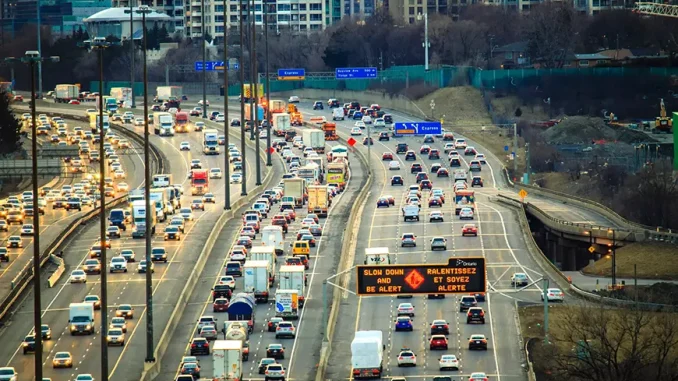
Toronto, the bustling metropolis of Canada, is a city defined by its vibrant neighborhoods, iconic landmarks, and bustling streets. At the heart of its transportation network lie the major highways that crisscross the city, facilitating the movement of people and goods and connecting Toronto to the broader region. In this article, we’ll take a closer look at Toronto’s major highways, exploring their routes, significance, and the role they play in shaping the city’s dynamic landscape.
Highway 401 (Ontario’s Macdonald-Cartier Freeway)
Widely regarded as one of the busiest and most important highways in North America, Highway 401 traverses the Greater Toronto Area (GTA) from east to west. Stretching over 800 kilometers, it serves as a vital artery for commuters, freight transportation, and intercity travel. In Toronto, Highway 401 passes through the northern outskirts of the city, connecting key neighborhoods and suburbs such as Scarborough, North York, and Etobicoke. With its multiple lanes and high traffic volumes, Highway 401 is a lifeline for residents and businesses alike, facilitating the movement of millions of vehicles daily.
Gardiner Expressway (Queen Elizabeth Way)
Running along Toronto’s waterfront, the Gardiner Expressway, also known as the Queen Elizabeth Way (QEW), provides a scenic route into the heart of the city. Originally constructed in the 1950s, the expressway offers stunning views of Lake Ontario and serves as a vital commuter route for residents living in the western and southern neighborhoods of Toronto. Despite its picturesque location, the Gardiner Expressway has faced criticism in recent years due to aging infrastructure and congestion issues. Efforts to modernize and revitalize the expressway are ongoing, with plans for expansion and maintenance aimed at improving traffic flow and safety.
Don Valley Parkway (DVP)
Running parallel to the Don River, the Don Valley Parkway (DVP) serves as a key north-south corridor through the eastern part of Toronto. Connecting the downtown core to the northern suburbs, the DVP provides commuters with a direct route to neighborhoods such as East York, North York, and Scarborough. With its sweeping curves and scenic vistas of the Don Valley, the DVP offers a picturesque yet essential link in Toronto’s transportation network. However, like many urban expressways, the DVP is prone to congestion during peak hours, prompting ongoing efforts to optimize traffic flow and improve safety.
Highway 427
Highway 427 serves as a crucial north-south artery in the western part of Toronto, connecting the city to neighboring regions such as Mississauga and Vaughan. Running from the QEW in the south to Highway 7 in the north, Highway 427 provides commuters with a direct route to Pearson International Airport, making it a vital link for travelers and freight transportation. With its multiple interchanges and high traffic volumes, Highway 427 plays a pivotal role in facilitating the movement of goods and people within the Greater Toronto Area.
Allen Road (William R. Allen Road)
Named after the former Metro Toronto Chairman William R. Allen, Allen Road is a north-south expressway that runs through the western part of Toronto. Originally intended as part of a larger expressway network, Allen Road now serves as a key commuter route connecting the neighborhoods of North York and York. Despite its relatively short length, Allen Road experiences heavy traffic congestion during peak hours, prompting ongoing discussions about potential expansion and improvements to alleviate congestion and improve safety.
In conclusion, Toronto’s major highways form the backbone of the city’s transportation network, facilitating the movement of people and goods and connecting neighborhoods across the Greater Toronto Area. From the bustling lanes of Highway 401 to the scenic vistas of the Gardiner Expressway and the vital commuter routes of the DVP, these highways play a pivotal role in shaping the city’s dynamic landscape and supporting its continued growth and prosperity. As Toronto continues to evolve, investment in infrastructure and transportation planning will be crucial to ensuring the efficiency, safety, and sustainability of its major highways for generations to come.
